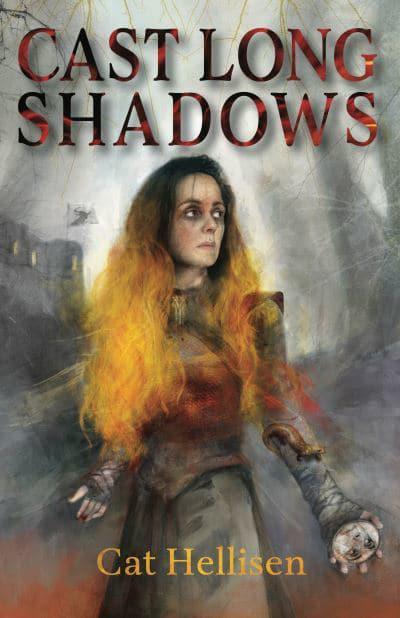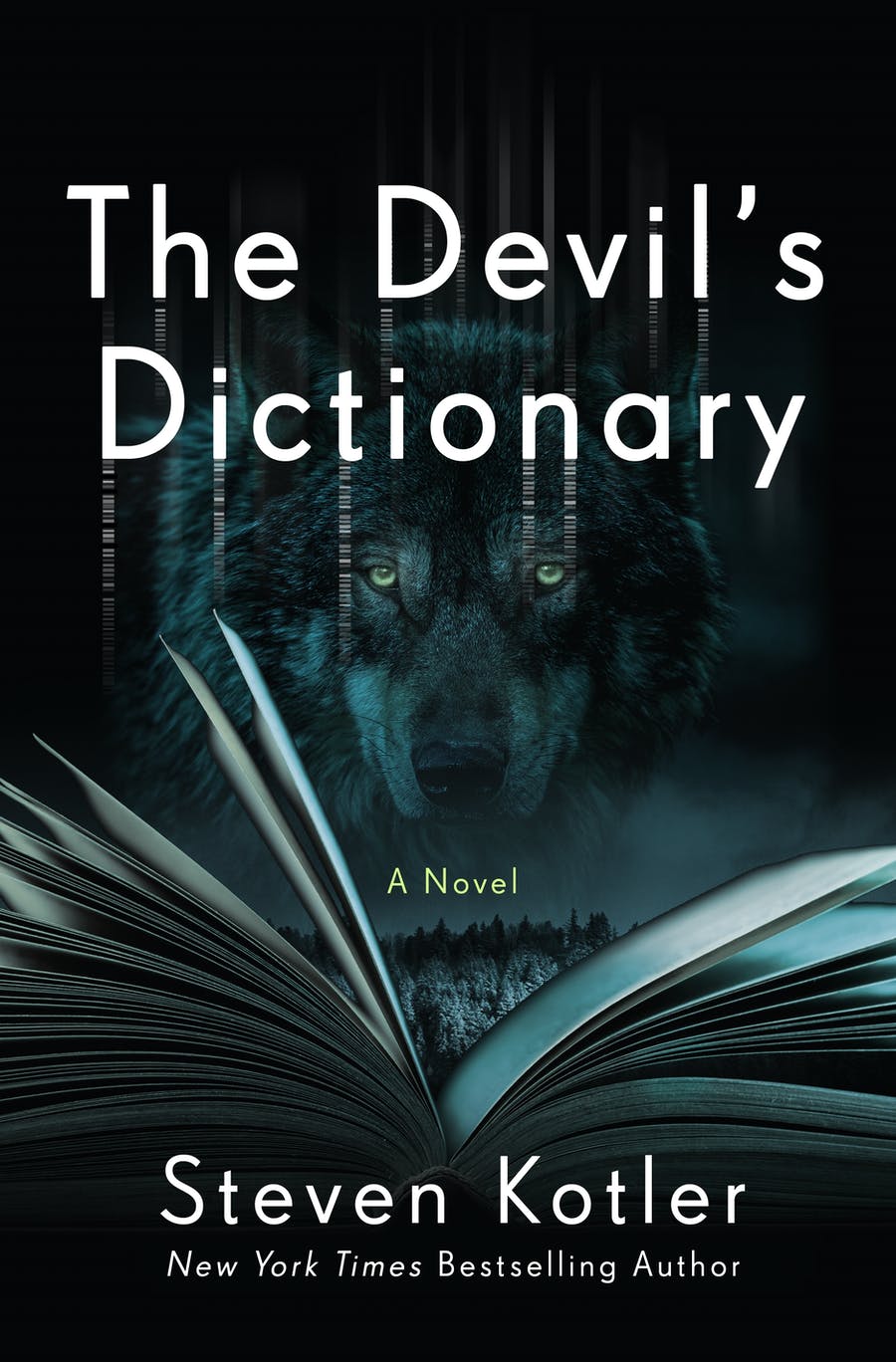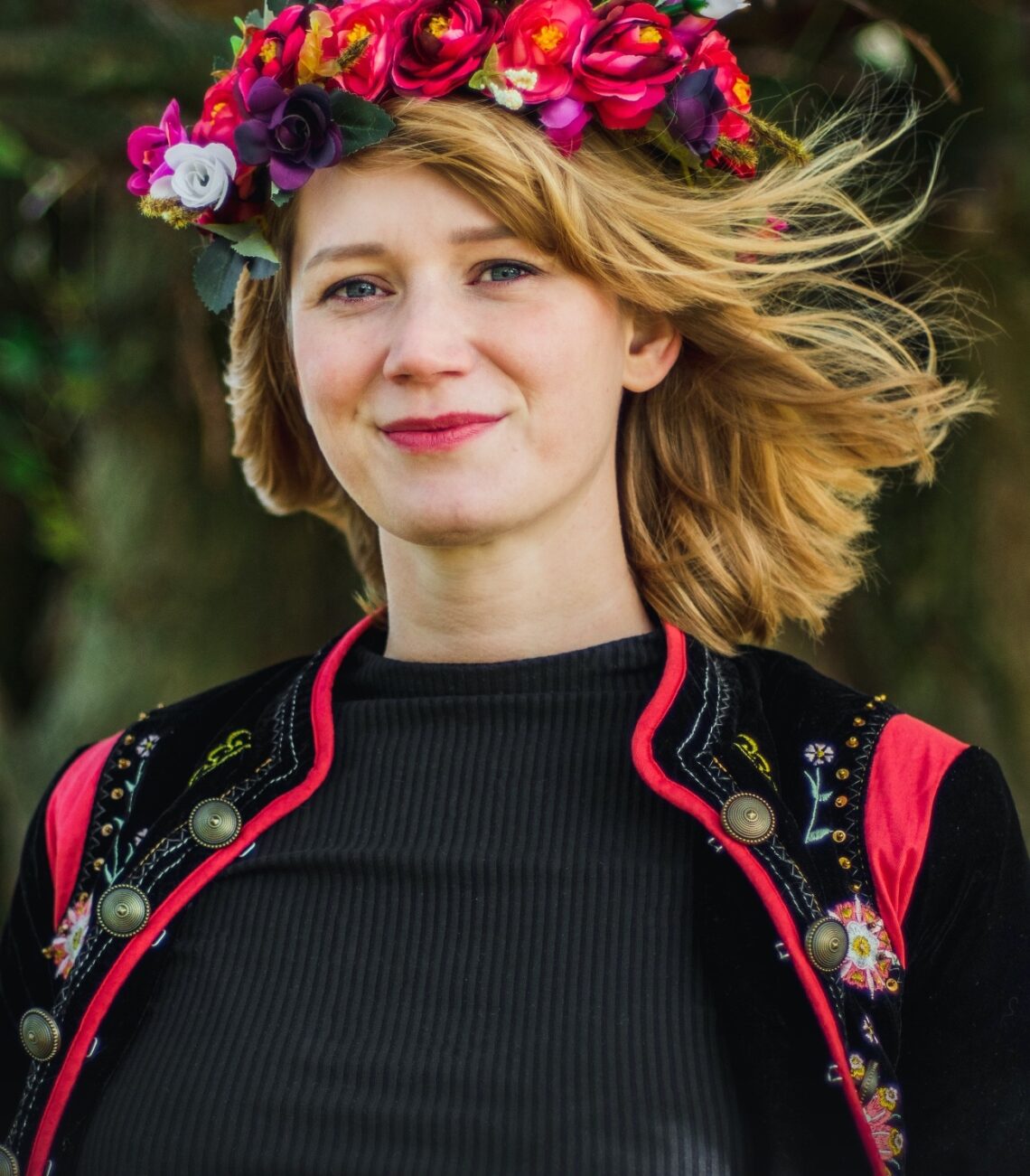-
Cast Long Shadows – Cat Hellisen
In a web of political machinations and religious tension, three women battle for survival with each other and, more poignantly, with their own selves. But this suggests a story of sweeping battles and loud proclamations, instead, Cast Long Shadows is full of quiet, and darkness, and stomach churning tension.
RELEASE DATE: 31/05/2022
STAR RATING: 4/5*
SUMMARY:
Marjeta Petrell.
Replacement bride, shadow of a dead and perfect wife, step-mother to a duke’s treasured daughter.
A girl out of her depth, alone and afraid.
Magic runs deep in her veins, stitched in blood ties, embroidered with kindness and pain.
In an unfamiliar court, Marjeta must discover who are her friends and who are enemies; who she can trust before she is accused of witchcraft and executed (from lunapresspublishing.com).OPINIONS:
I was terrified of writing this review… of finishing this book… of confronting internalised misogyny, rejecting which feels so dangerous. Cast Long Shadows is a book about witches, sure, but it is also a book about women, and about how easy it is to brand your friend as an enemy when that is what you’ve been taught your entire life.
Marjeta’s initial perception of femininity as deplorable and dangerous is something familiar to me from my own teenage years – I, too, did not see magic in embroidery, or quiet charm-weaving, or well placed words in a world made by boot, gun, and shout, in a world made for men. It’s captured strikingly in the protagonist’s disdainful, pain filled words ‘What good is a message? Will it help her burn faster?’ Marjeta’s evolution through the novel is telling, just as my own had been, moving in evocative sweeping passages of excellent prose. It is, however, a little over-long, and I became inured to the tension. The distrust and paranoia strike close to home, as does the penitent abnegation of Lilika, Marjeta’s foil, for a transgression in equal parts real and imagined.
The novel presents a variety of complex mother figures, ranging from step-mothers to confidantes, that is refreshing in a work which touches on the archetypal narrative of the witch-bride come to replace the benevolent ‘real’ mother. And it offers a bleak justice at the end, but it leaves a sour taste, like old ashes.
It is not a comfortable read, but a necessary one, all the more for the work it does to rehabilitate logos and writing from the masculine paradigm. This might not be the kind of witch story you expect, but it is one that is sorely needed, and lies closer to the historical witchcraft accusations of the early modern period.
-
Blog Tour: Sistersong (paperback) – Lucy Holland
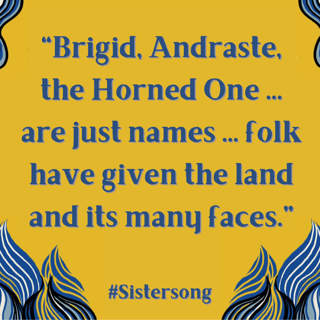
In my current research project, I have this knack – I’m working on the Horned God in fantasy fiction, a figure that usually pops up on the sidelines or has a very limited presence, but casually browsing bookshelves in a shop or library, I’ll often pick up a random volume that catches my eye – and there he is. It’s uncanny, honestly! This was certainly the case with Sistersong. I picked the volume up on recommendation from Fabienne and because I enjoyed Lucy Holland’s previous fantasy oeuvre, the Worldmaker trilogy. I did not expect to find Cernunnos in its pages, nor did I expect that this novel would come to occupy such a central space in my research.
Sistersong weaves a sellic spell that pluck at the heartstrings and leaves the reader wondering.
RELEASE DATE: 28/04/2022
STAR RATING: 5/5✶
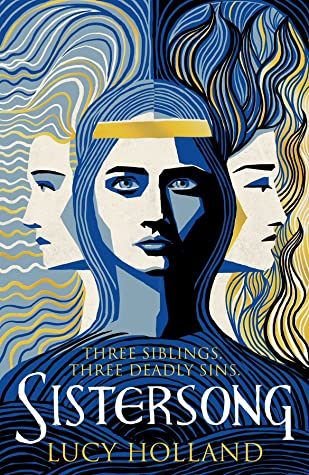
SUMMARY: King Cador’s children inherit a land abandoned by the Romans, torn by warring tribes. Riva can cure others, but can’t heal her own scars. Keyne battles to be seen as the king’s son, although born a daughter. And Sinne dreams of love, longing for adventure.
All three fear a life of confinement within the walls of the hold, their people’s last bastion of strength against the invading Saxons. However, change comes on the day ash falls from the sky – bringing Myrdhin, meddler and magician. The siblings discover the power that lies within them and the land. But fate also brings Tristan, a warrior whose secrets will tear them apart.
Riva, Keyne and Sinne become entangled in a web of treachery and heartbreak, and must fight to forge their own paths. It’s a story that will shape the destiny of Britain (from Pan Macmillan).
OPINIONS: First and foremost, this is an excellently researched novel. The historical details are grounded in both medieval chronicles and longstanding tradition of reimagining the Middle Ages, but Sistersong also respectfully engages with concerns of the 21st century, especially gender politics and notions of spiritual autonomy.
As for the Horned God, Cernunnos, his godhood is more literary than factual – the name survives to us in a single inscription of a Gallo-Roman devotional stele discovered in Paris (you can see it here), and archaeological evidence suggests he was a local deity subsumed into the Roman pantheon as Gaul became part of the Roman Empire. Further concrete information about how he was worshipped and by whom is lost to history, but he did find an ally in anthropologist Margaret Murray, whose ideas can be considered key for modern paganism in the West. Murray suggested that Cernunnos was one example among countless expressions of a pan-European Horned God, embodiment of male sexuality, wildness, and the natural world. This idea was taken up by fantasy authors to give Cernunnos a revived divinity. And he makes his appearance in Sistersong, along with Celtic goddesses Andraste, Brigid, and Epona.
What struck me specifically was the gods were seen as ways of understanding the natural world. It’s something I’m arguing in my thesis: pagan gods in fiction are used to bring to mind nature and our relationship with it. And Holland presents this idea is a wonderfully eloquent way: at one point in the narrative one of the protagonists discusses the nature of magic with Myrdhin/Mori, a mysterious mentor character. Mori insists that there are no gods, and that ‘Brigid, Andraste, the Horned One […] are just names […] folk have given the land and its many faces.’
Throughout the novel, humanity’s union with and attention to the land is leitmotif that defines the characters’ success or downfall – forget the land’s name and you forget yourself. Without overtly referencing the current ecological catastrophe, Holland brings to mind the importance of human compassion to our environment. I found this incredibly powerful.
Now that Sistersong is out in paperback, do give it a read yourself and delve into legends of spectral hunts, ancient monuments and the uncanny bond between three siblings.
-
The Devil’s Dictionary – Steven Kotler
For those who are looking for an unconventional sci-fi read exploring topics of ecology, empathy and the morality of making money, this book will have you snap your fingers and go ‘found it!’ The Devil’s Dictionary is full of complex questions, but it never leaves levity behind. It’s wry protagonist and clever, tongue-in-cheek narrative style are bound to get you hooked.
RELEASE DATE: 19/04/2022
STAR RATING: 5/5 *

SYNOPSYS:
Hard to say exactly when the human species fractured. Harder to say when this new talent arrived. But Lion Zorn, protagonist of Last Tango in Cyberspace, is the first of his kind—an empathy tracker, an emotional forecaster, with a felt sense for how culture evolves and the future arrives.
It’s also a useful skill in today’s competitive business market.
In The Devil’s Dictionary, when a routine em-tracking job goes sideways and em-trackers themselves start disappearing, Lion finds himself not knowing who to trust in a life and death race to uncover the truth. And when the trail leads to the world’s first mega-linkage, a continent-wide national park advertised as the best way to stave off environmental collapse, and exotic animals unlike any on Earth start showing up—Lion’s quest for truth becomes a fight for the survival of the species. (from Macmillan)
OPINIONS:
Hands down, my favourite read of the year! Kotler takes no prisoners in this sci-fi novel meets detective mystery. The premise that a mind-altering substance actually increases your empathy to other, especially other-than-human, beings is refreshing after the convention of sci-fi tech equaling emotionless rationality. It is also an excellent premise through which to discuss human-led ecological change, which Kotler does exceptionally well.
Kotler’s language has a superb physicality to it. Like ‘one of those info-marketers turned self-help gurus, …, who seems to have self-helped himself to damn nearly every piece of real estate in this part of London’ – a situation that is both alternative reality and also here, now, unapologetically in your face. The dialogue especially is a marvellous thing. The story’s diverse cast is captured through unique linguistic patterns and mannerisms. The conversations are vibrant, with interruptions, tangents and in-jokes that make them come alive. I’ve had these conversations with my friends. Well, maybe not exactly these conversations…
Since I work on ecological themes in literature for my research, The Devil’s Dictionary was a goldmine of philosophical quandaries and popular imagination assumptions, all bound up in a riveting plot that zigs and zags its way through the mystery, but never lets the readers lose themselves. I finished the book galvanised; perhaps, because despite tackling current social concerns, the novel does not preach anything, but presents a complex situation in a complex world. And that world is not lacking in beauty for being imperfect. It’s a book with feeling, and I wholeheartedly recommend it to anyone!
-
The Knave of Secrets – Alex Livingston
‘Never gamble more than you can afford to lose’ is an excellent tag-line, but The Knave of Secrets refreshingly focuses on the losses of a single person. There is no cosmic evil rearing to engulf the world in darkness, no prophesied saviour, but the stakes are high none the less, and the protagonists must make their own luck to stay ahead in the game. Oh, and if you’re into period table-top games – this one’s for you!
RELEASE DATE: 07/06/2022
STAR RATING: 4/5 *

SUMMARY:
When failed magician turned cardsharp Valen Quinol is given the chance to play in the Forbearance Game—the invitation-only tournament where players gamble with secrets—he can’t resist. Or refuse, for that matter, according to the petty gangster sponsoring his seat at the table. Valen beats the man he was sent to play, and wins the most valuable secret ever staked in the history of the tournament.
Now Valen and his motley crew are being hunted by thieves, gangsters, spies and wizards, all with their own reasons for wanting what’s in that envelope. It’s a game of nations where Valen doesn’t know all the rules or who all the players are, and can’t see all the moves. But he does know if the secret falls into the wrong hands, it could plunge the whole world into war… (from Simon & Schuster)
OPINIONS:
This book is bound to appeal both to fans of Now You See Me and to those who like their fantasy with a side of politics. Like a clever card trick, The Knave… looks good from all angles. For me personally, it is an unusual choice: a book in which the vast expanses of the world are glimpsed in the gaps, and the real action takes place in close rooms and across gaming tables. The protagonist, a middle-aged ‘honest cheat’, is also hardly the type I tend to go for. But for all that, The Knave of Secrets was a wonderfully refreshing read. Despite it’s well-developed world, it scales the narrative down to human concerns and personal choices. Resolutions lie not in force of arms, but in a cleverly played secret.
Livingston’s research of gambling and dishonest play is impeccable, but I have to confess my attention wandered from some descriptions of gameplay. The book reminded me of a Dutch genre painting: a glimpse of a life that is all the more titillating for its brevity and its incompleteness. The characters feel like they’ll go right along with their lives after I’ve turned the final page.
From a metatextual point of view, The Knave… is cognisant of its readership. Subtle choices that problematise nationalism, elitism, and inequalities in education (especially the magical sort) are made to Livingston’s credit. It’s a book of quiet tension, and one I would openly recommend.
-
Gabriela Houston on Slavic Folklore in The Wind Child
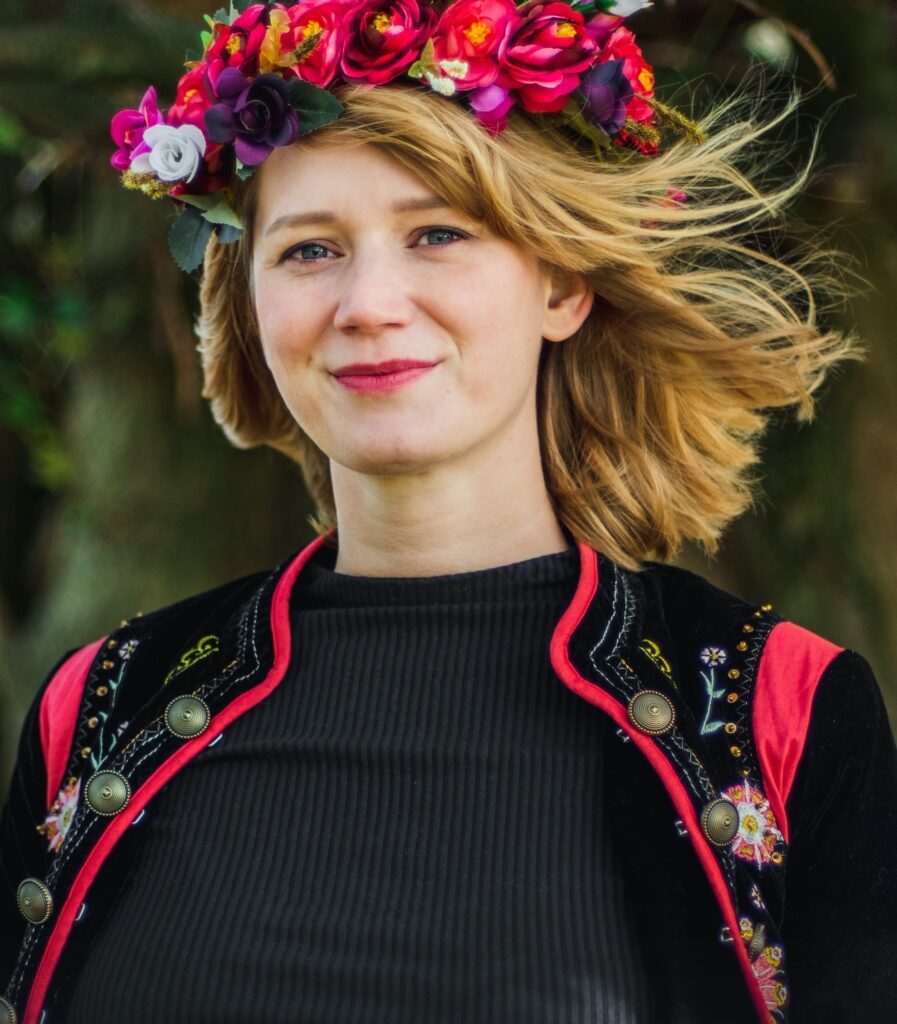
Gabriela Houston is a Polish-born British author with a knack for spinning myths into captivating modern retellings. Hot on the heels of her debut novel, The Second Bell (out from Angry Robot Books), comes her middle-grade book The Wind Child.
In anticipation of the book’s release, I have had the pleasure of talking to Gabriela about the inspirations behind the book and her unique take on Slavic folklore.
- What drew you to adopting Slavic folklore in your fantasy works?
I’m Polish, and the Slavic fairy tales were a big part of my early childhood. As I grew, I became more interested in other nations’ mythologies: Greek, Norse, and Japanese especially. But there was always this sense that there is this whole world I haven’t truly explored. And Slavic mythology is so full of wonder, and darkness, and adventure, it’s very much worth sharing.
- What was the most challenging aspect of working with Slavic folk figures and narratives?
There is very little in the way of consistency in the source materials. Unlike its Norse or Ancient Roman counterparts, Slavic mythology was never contemporarily put into a set text, detailing the pantheon and the roles of the individual spirits and creatures. What we know now, has been carefully pieced together by archeologists, comparative linguists, historians and ethnographers from folktales, songs and archeological finds. The resulting image is incomplete, and sometimes contradictory.
On the upside, writing Slavic-folklore-inspired fiction is not an exercise in academic accuracy. Like a magpie, I swoop in towards the shiny bits of research and weave them into something new. And the ambiguity around a lot of the mythological elements gives me more freedom than if I was writing novels inspired by, say, Ancient Egyptian mythology.
- I am fascinated by the Gamayun figure. What’s her story?
Gamayun was a half-eagle, half-woman, sometimes described as a creature serving the fates.
In The Wind Child, I was very interested in the complexity of belonging to more than one world. Mara, the protagonist, feels ever pulled by the two sides of her heritage, the human and the godly. Looking more like one than the other doesn’t erase the complexity of her being, and it’s something she has to come to terms with as well. Her best friend, Torniv, feels like an outcast, being the son of an absent Botrish mother, and brought up among those who despise him for it. In following Mara he ends up choosing another double existence, as it were, by becoming a bear-shifter.
In exploring those issues, I thought Gamayun would be the perfect bridge between the worlds for the two protagonists. She is the guardian of the half-things, as she describes herself, and very far from the cold perfection of the gods and the suspiciousness of the humans. She has the qualities of kindness and understanding, which are so precious and so necessary, to a child especially.
- Were there any differences between Slavic and Western supernatural beings that particularly surprised you during your research?
I wouldn’t say they surprised me, as I grew up reading both. There are some elements to Slavic folklore which are dictated by the complexities of the geopolitical landscape of the lands they stemmed from. It’s also crucial to me to separate what we know of the old Slavic mythologies from the later, Christianity-influenced interpretations.
It is my view that the ancient Slavs valued the following of the rules that secured a certain balance between the human and the spirit- and the natural worlds. Those rules might not be in your favour, but they will always be followed, even by the most vicious of creatures. And something that features prominently in Slavic folklore, for example, that I haven’t noticed to the same degree in, say, Norse mythologies, is the importance placed on the qualities of kindness and gratitude. A hero who is open and generous towards the feared and the unwanted is always rewarded, while the shifty tricksters are rejected by the humans and the gods alike.
- In both The Second Bell and The Wind Child, protagonists are raised effectively by single parents. What led you to explore this family dynamic?
I’m interested in the stories that focus on the complexities of family relationships, often in their multi-generational context.
In The Second Bell, the two main protagonists are mother and daughter, who are rejected by their own people, one because she values her child above the laws of her society, and the other for the qualities she was born with. I was interested in exploring the closeness as well as the insularity of the bond between the two of them. I wanted to show how the need to protect doesn’t just go from parent to child, but is a mutual push and pull of love, duty, and the need to keep the people we love safe and happy, even at great personal cost.
The Wind Child, in a way, is a continuation of that line of thinking. How far a child, bonded strongly with one of the parents, would go to keep that parent from harm. What would they go through to avoid having to say goodbye.
Mara’s loneliness and sense of isolation in The Wind Child, is profound, and so is her need to hold onto the one relationship which kept her grounded in her early childhood. Mara’s mother, the goddess Zevena, is a cold and distant figure, with no malice perhaps, but for a child like Mara, Zevena is simultaneously too much to strive to match, and too little when it comes to the affection and reassurance she needs.
- You describe Dogoda with stag antlers. Why that particular choice?
I like the concept of the unsettled form of the wind spirits. Shape-shifting is a very prominent motif in Slavic folklore, and it made sense for me to show this link between the God of Summer Winds and the nature we see in the summer: the lushness, the thriving life. And stag is a powerful symbol of all of that. Also, I thought it looked cool!1
- Where are Mara and Torniv going next?
The Wind Child completes the arc of Mara’s journey to rescue her father, but along the way she stirs up a lot of trouble. I hope to be able to show the world how she gets out of it in volume two, but the Gods of Book Sales must be on my side in this to allow me to release it.

The Wind Child comes out in February 2022 from UCLan Publishing, and you can read Fab’s review of it here.
1 An indulgent question on my part, since I study all manner of horned and antlered creatures in literature. In Western Europe and the US they are most likely to be based on the Horned God, a pagan deity of animals and wilderness. But it is fascinating to see how enduring this motif is across cultures and historical periods. And Gabriela is absolutely right – it does look very cool!
-
Stolen Earth – J. T. Nicholas
This book could not be more timely than now! A powerful read about survival and morality under threat of extinction. Many thanks to Sarah Mather at Titan Books for sending me a review copy. All opinions are my own.
RELEASE DATE: 21/09/2021
STAR RATING: 5/5 ✶
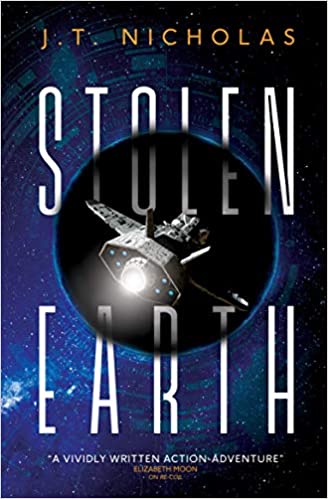
SUMMARY: Environmental disasters and AI armies have caused the human population of Earth to flee. They lie scattered across space stations and colonies, overcrowded and suffering. The Earth is cut off by the Interdiction Zone: a network of satellites that prevents any escape from the planet. The incredible cost of maintaining it has crippled humanity, who struggle under the totalitarian yoke of the Sol Commonwealth government. Many have been driven to the edge of society, taking any work offered, criminal and otherwise, in order to survive. The crew of the Arcus are just such people.
Through the Interdiction Zone, a world of priceless artefacts awaits, provided anyone is crazy enough to make the run. With fuel running low and cred accounts even lower, the Arcus’ survival might depend on taking the job. Yet on arrival on Earth, the crew discovers that what remains of their world is not as they have been told, and the truth may bring the entire Sol Commonwealth tumbling down… (From Titan Books)OPINIONS: Reading Stolen Earth against a backdrop of newsreels on resource poverty, environmental degradation, and the ultra-rich’s space tourism, makes it seem less like science fiction and more like science possibility. ‘What if this is our future?’ I wondered halfway through the book. Well, the protagonists are not lying down to take it. The stark, claustrophobic spaces of spacer life, conveyed through minimalistic but punchy descriptions, bring to the fore the interior lives of the characters. In diametric opposite to something like a sprawling high fantasy novel, the world of Stolen Earth is pared down; there is no lush background to recede into, only the crew of the Arcus in their daring bid to reach Earth and return. And it works perfectly for a novel that deals with resource scarcity and the dilemma of ensuring your own survival or doing the right thing.
I was a bit thrown by encountering yet another Soviet-coded bruiser with a penchant for violence raised by a criminal cartel where children are forced to labour in the mines. It’s not this character, Leo Federov, in particular, but just how often that trope occurs, that has given me pause. But ultimately, his heritage and his occasional Russian expletives can be ignored and have no significant bearing on the story.
Finally, I loved Nicholas’ treatment of incomplete solutions: outcomes are negotiated, characters misunderstand or mistrust each other, there are plenty of invested parties, each pulling in their own direction, but… that’s what makes the world of Stolen Earth so compelling and so timely.
Add Stolen Earth to your Goodreads here, and order a copy from Bookshop here (affiliate link).
-
XX – Rian Hughes
This is something quite different from my usual review fare. I had to ask myself, ‘almost 1000 pages. Are you sure?’ and just like that I knew I’d relish the challenge. And I was not disappointed!
Many thanks to Black Crow PR for the review copy. All opinions are my own.
RELEASE DATE: 20/08/2020 (HB) / 19/08/2021 (PB)
STAR RATING: 5/5 ✶

SUMMARY: At Jodrell Bank a mysterious signal of extraterrestrial origin has been detected. Artificial intelligence expert Jack Fenwick thinks he can decode it. But when he and his associates at Hoxton tech startup Intelligencia find a way to step into the alien realm the signal encodes, they discover that it’s already occupied – by ghostly entities that may come from our own past. Have these ‘DMEn’ (Digital Memetic Entities) been created by persons unknown for just such an eventuality? Are they our first line of defence in a coming war, not for territory, but for our minds? XX presents a compelling vision of humanity’s unique place in the universe, and of what might happen in the wake of the biggest scientific discovery in human history. As compelling as it is visually striking, Rian Hughes’ first novel incorporates NASA transcripts, newspaper and magazine articles, fictitious Wikipedia pages, undeciphered alphabets, and ‘Ascension’, a forgotten novelette by 1960s counterculture guru Herschel Teague that mysteriously foreshadows events. The battle for your mind has already begun. (from Pan Macmillan)
OPINIONS: Weighing in at just under 1.2 kg, this book is not one to approach lightly. And not just because it’s a doorstop of a volume. Like it’s subject matter – a mysterious signal from space – it is an artefact, a palimpsest of words, fonts, and layouts. The narrative follows Jack Fenwick, who describes himself as being on the autistic spectrum and having ‘a propensity for spotting patterns, repetitions, a knack for seeing through large volumes of raw data to the underlying equations.’ The book itself seems to be a glimpse into his world: a place of signs and archived web-pages worth any conspiracy buff’s cork board. A topography of the mind.
Rian Hughes’ XX is unlike anything I have ever read. Even the word ‘reading’ doesn’t seem to fully encompass what passed between me and this book. It has such a presence in the room! It is part concrete poetry, part algorithm, raising the ever-present questions: where does consciousness arise? and what forms can it take?
I certainly did not find it a light read (in both senses of the word), but a very stimulating one. It tackles the possibility of consciousness that is profoundly inhuman in a compelling a varied way. And I hesitate to even comment on the storyline’s development, because, like the signs that permeate the book, it feels open to interpretation. If you feel inclined to tackle the big questions – this one’s a must!
Add XX to your Goodreads here, and order a copy from Bookshop here (affiliate link).
-
The Rookery – Deborah Hewitt
Please welcome Anna to Libri Draconis with her very first review!
I was ready to return into Deborah Hewitt’s alternative London, full of mystery and flocking with soul-birds. But the second instalment of The Nightjar duology left me wanting something more.
Many thanks to Jamie-Lee Nardone and Stephen Haskins of Black Crow PR for the review copy. All opinions are my own.
RELEASE DATE: 05/08/2021
STAR RATING: 3/5 ✶

SUMMARY: After being plunged into the world of mysterious soul-birds and magical legacies in the first instalment of The Nightjar duology, Alice Wyndham returns to confront her powers and her past in The Rookery. Having discovered she is a daughter of Death, Alice goes back to the Rookery, an alternative magical London, to learn more about what ties her to the city. But the discovery of secrets is never a comfortable business, as Alice realises not only her life, but the very foundations of the Rookery are at risk. Adversaries turn into allies, and friends – into foes, while Alice struggles to reconcile her magical gifts and her heart.
OPINIONS:
I had a mixed experience with this one. Returning to the world of the Rookery was an excellent chance to explore the world in more detail. But, unusually, I found myself wishing that it were smaller. In The Rookery, Alice tries to build a life for her newly-discovered magical self while still struggling with her identity as the daughter of Death. She is aided by the allies introduced in the preceding novel, The Nightjar, and a whole host of new characters, which both lent the world a whirlwind richness and made it more difficult for me to form strong attachments to anyone beyond Alice and her romantic interest, Crowley.
The tension between Alice and Crowley, as she both yearns for him and struggles to forgive his deceit, is expertly executed. It also bolsters the overall theme of Alice’s free will versus the circumstances outside her control that pervades the narrative. Echoes of it are found in Alice choosing the Rookery over her life in ordinary London, and her deliberation over joining House Mielikki, whose legacy she possesses. Unfortunately, I found the theme of free choice and chosen family undermined by how much emphasis is placed on Alice’s biological heredity. I think this could have been done differently.
Hewitt’s choice to infuse her world with magic inspired by Finnish mythology lends it a striking uniqueness. However, barring some names and allusions, there isn’t much that actively situates the magic system as Finnish. Which is a great shame; I’d read the heck out of a book set in magical Helsinki. The elemental and spiritual magics also feel ill at ease in a city cobbled together out of forgotten bits of London. A deep dive into London’s abandoned byways could have made The Rookery a very different novel, but that is not what we have here. The cosiest place, and the one I imagined in most detail, is Goring University, Alice’s workplace, and I found myself hoping more of the city was treated in the same manner.
The Rookery reads like many excellent ideas contained in too restrictive a narrative. I’d have loved to read about all of them in separate books, but maybe not together. You can decide for yourself by adding it to Goodreads here or picking up a copy from Bookshop here (affiliate link).
